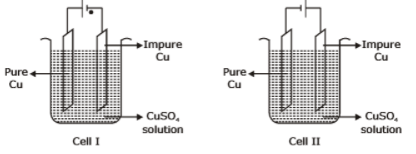EASY
NTSE Stage II
IMPORTANT
Earn 100
Read the following statements.
Statement I: Sodium metal reacts violently with water to produce heat and fire.
Statement II: Potassium metal reacts violently with water to form potassium hydroxide and hydrogen gas.
Select the correct answer from the option given below
(a)Statement I is true, Statement II is false.
(b)Statement I is false, Statement II is true.
(c)Both statements are true, and Statement II provides explanation to Statement I.
(d)Both Statements are true but Statement II does not provides explanation to Statement I.
50% studentsanswered this correctly

Important Questions on Metals and Non-Metals
EASY
NTSE Stage II
IMPORTANT
Which of the following set of reactions will NOT occur?
I.
II.
III.
IV.
EASY
NTSE Stage II
IMPORTANT
I. Metal H does not react with dilute .
II. Metal K reacts with warm water.
III. Metal L does not react with water but displaces metal H from its aqueous salt solution.
IV. Metal M reacts with cold water.
Choose the correct decreasing order of reactivity of these metals amongst the following.
EASY
NTSE Stage II
IMPORTANT
Consider the electrochemical cells(I and II) shown in the following figures and select the correct statement about these cells

MEDIUM
NTSE Stage II
IMPORTANT
Read the following table:
| Metal | Reaction with | ||
| solution | solution | solution | |
| X | No reaction | No reaction | No reaction |
| Y | No reaction | No reaction | Displacement reaction |
| Z | Displacement reaction | Displacement reaction | Displacement reaction |
Based on the above table consider the following statements
I. Reaction of Y with solution produces metal.
II. Z is the most reactive element and X is the least reactive.
III. Y is more reactive than X and less reactive than Z.
IV. Metal Y produces on reaction with solution.
Which of the following options gives the correct statements?
MEDIUM
NTSE Stage II
IMPORTANT
